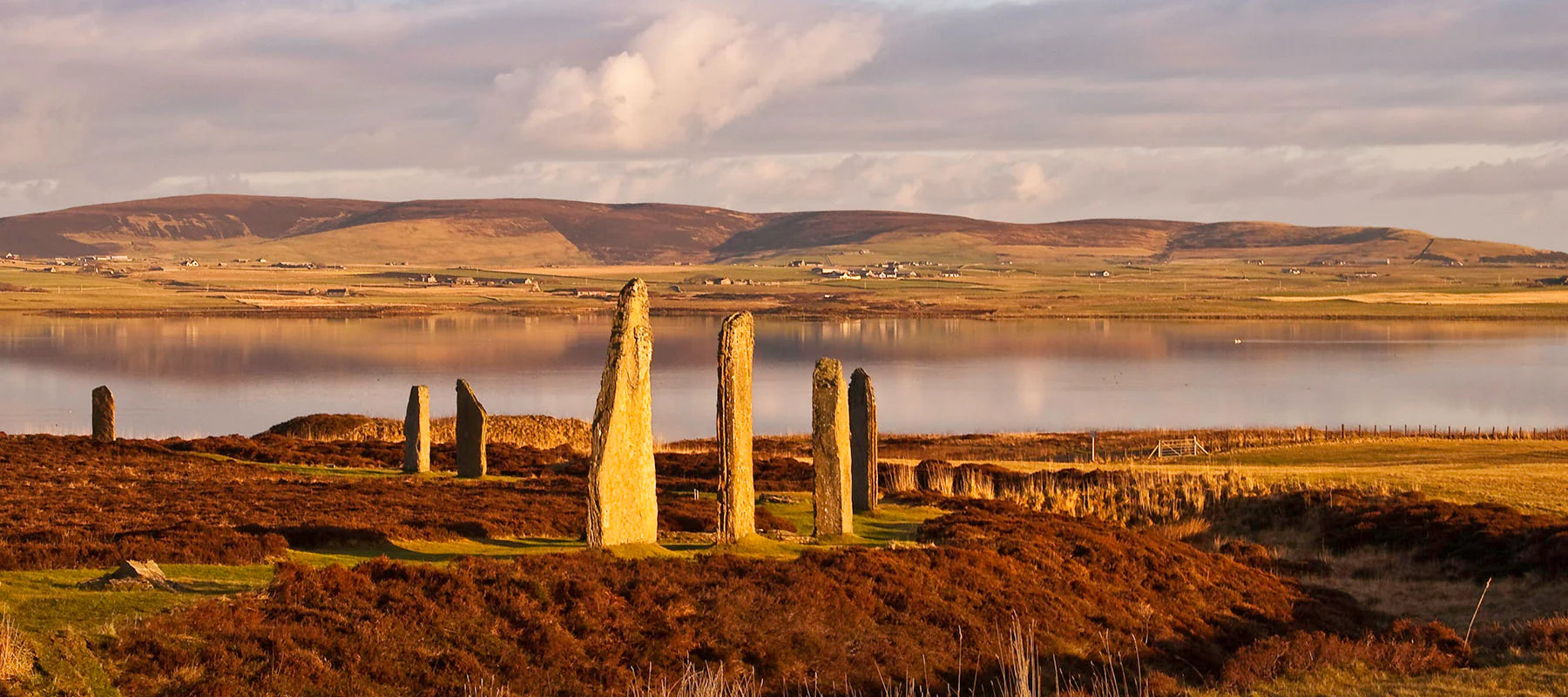After crossing the rugged highland scenery of the North of Scotland - the first impressions of Orkney are of greenness and fertility, combined with a feeling of space where undulating soft countryside merges with sky and sea into a soft confluence of nature.
The old and the new, the natural environment and the geographical location all merge to give the islands their uniquely attractive sense of place.
The natural environment of Orkney has been formed by the interaction of land, sea and ice. Each island is different, resulting in a wide variety of scenery and habitat in a small place. Having been heavily glaciated during the last Ice Age, the landscape is of smooth rollings hills and shallow sounds and bays. Since the Ice Age, the rising sea level has flooded the area to form the present green and blue landscape of islands and water.
Orkney's first settlers were probably seafarers from Britain, Ireland, Denmark or even Norway. Farmers were well established in Orkney 6000 years ago and archaeology points to these people being accomplished stonemasons, craftsmen (including Ortak's talented craftsmen of designer jewellery) and seafarers who created sophisticated accommodations for themselves and elaborate monuments for their dead.
Orkney is one of the finest places in Western Europe for bird watching. The cliffs, maritime heath, moorland, marshes, lochs and coasts provide food and habitat for dozens of species including Puffins, Razorbills, Guillemots, Gannets, Arctic Terns, Curlews, Skuas, Harriers, Owls, Corncrakes and Oystercatchers. Other residents include Otters, Voles, Seals, Whales and Dolphins.






